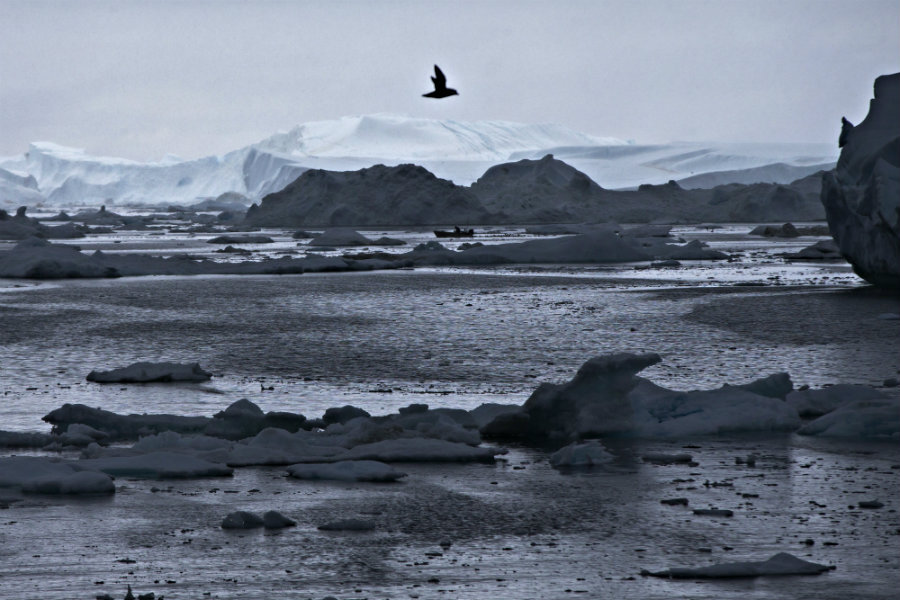The Big Melt: Arctic receives failing grades on NOAA's annual report card
Loading...
Arctic air temperatures hit record highs every month this fall, according to the annual National Oceanic and Atmospheric Administration report card released on Tuesday. The trend has important implications for both the future of the Arctic and of the world’s oceans.
NOAA's 11th annual Arctic Report Card points to an ominous trend: “Rarely have we seen the Arctic show a clearer, stronger or more pronounced signal of persistent warming and its cascading effects on the environment than this year,” said director of NOAA’s Arctic Research Program director Jeremy Mathis in a press release.
Although the rest of the world is warming, the report’s authors wrote, the Arctic is warming at twice the rate of other parts of the world. Temperatures measured between October 2015 and September 2016 were “by far the highest in the observational record beginning in 1900,” according to the report card.
With southerly winds blowing warmer air into the Arctic, each season experienced higher than average temperatures. January temperatures this year were more than 8 degrees Celsius, or 14.4 degrees F., above normal in some parts of the Arctic.
The short term result of higher temperature is, of course, less sea ice. In June, The Christian Science Monitor reported that sea ice had hit record lows, beating the previous record by a total melted area the size of California.
And even though this summer’s ice melt was relatively moderate due to cooler temperatures, warmer than usual fall temperatures this fall prevented the Arctic from its usual seasonal freeze up, which thickens ice sheets at the poles.
And melts are beginning earlier than ever, as well. NOAA’s 2016 report card states that Greenland’s ice sheet began melting earlier than every other year for the past 37, save one.
Scientists say that while some still attempt to deny the effect that warming global temperatures are having on the Arctic, citing studies that find that ice extents in the Southern Hemisphere actually increased over the 2012 to 2014 period, the long-term data shows an incontrovertible trend towards a warmer Arctic.
“[It] certainly puts the kibosh on everyone saying that Antarctica's ice is just going up and up,” Cryospheric Sciences Laboratory research scientist Walt Meier told CNN earlier this fall when Arctic sea ice hit record lows at both poles.
So what happens if the Arctic warms?
Melting ice sheets have both a global and a local impact. For example, locally, species such as polar bears are expected to suffer, with polar bear populations expected to decline by 30 percent by mid-century. And the bear’s smaller neighbors, shrews and other tiny Arctic animals, are expected to develop parasites that indicate shifts in the fauna of the region, as warm weather animals and parasites begin to populate the Arctic.
Shrinking ice extents also mean warmer oceans, which in turn affect ocean acidification and species loss around the world. In the Arctic, permafrost thawing will release more carbon into the atmosphere, according to NOAA’s report card, worsening the greenhouse effect.
According to Dr. Mathis, the extreme impact that warming temperatures can have on the region means that further study is needed to track and pinpoint environmental changes as they occur.
“While the science is becoming clearer,” says Mathis, “we need to improve and extend sustained observations of the Arctic that can inform sound decisions on environmental health and food security as well as emerging opportunities for commerce.”








